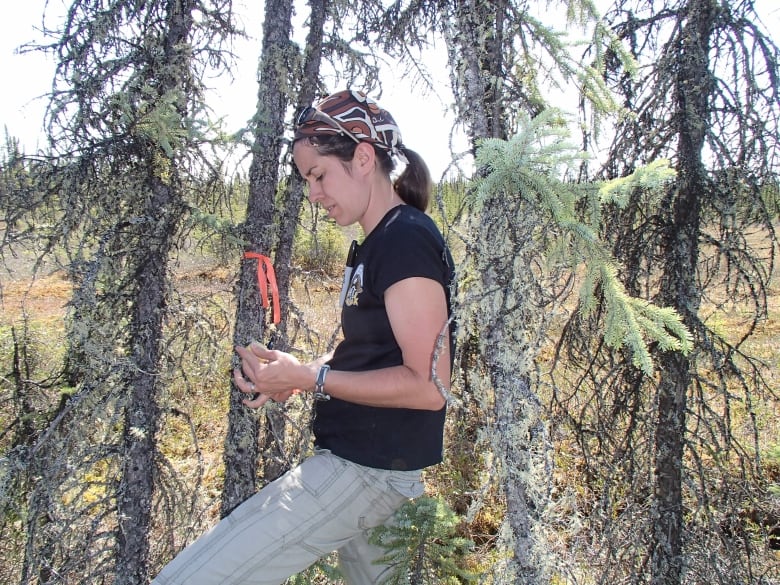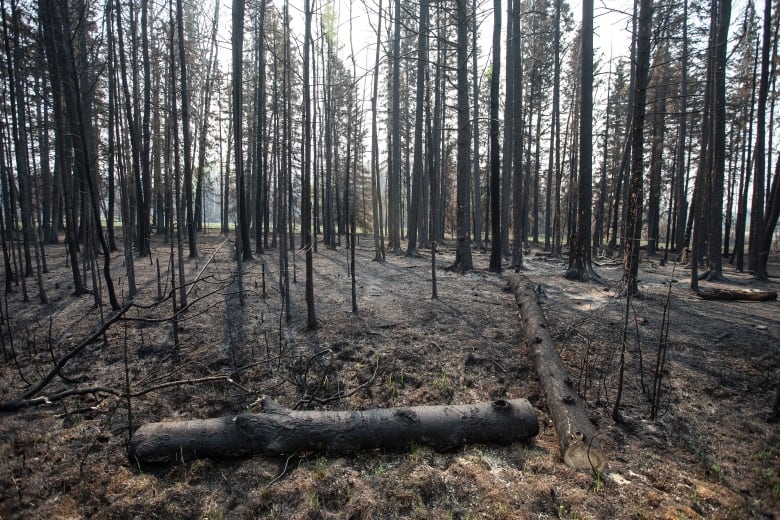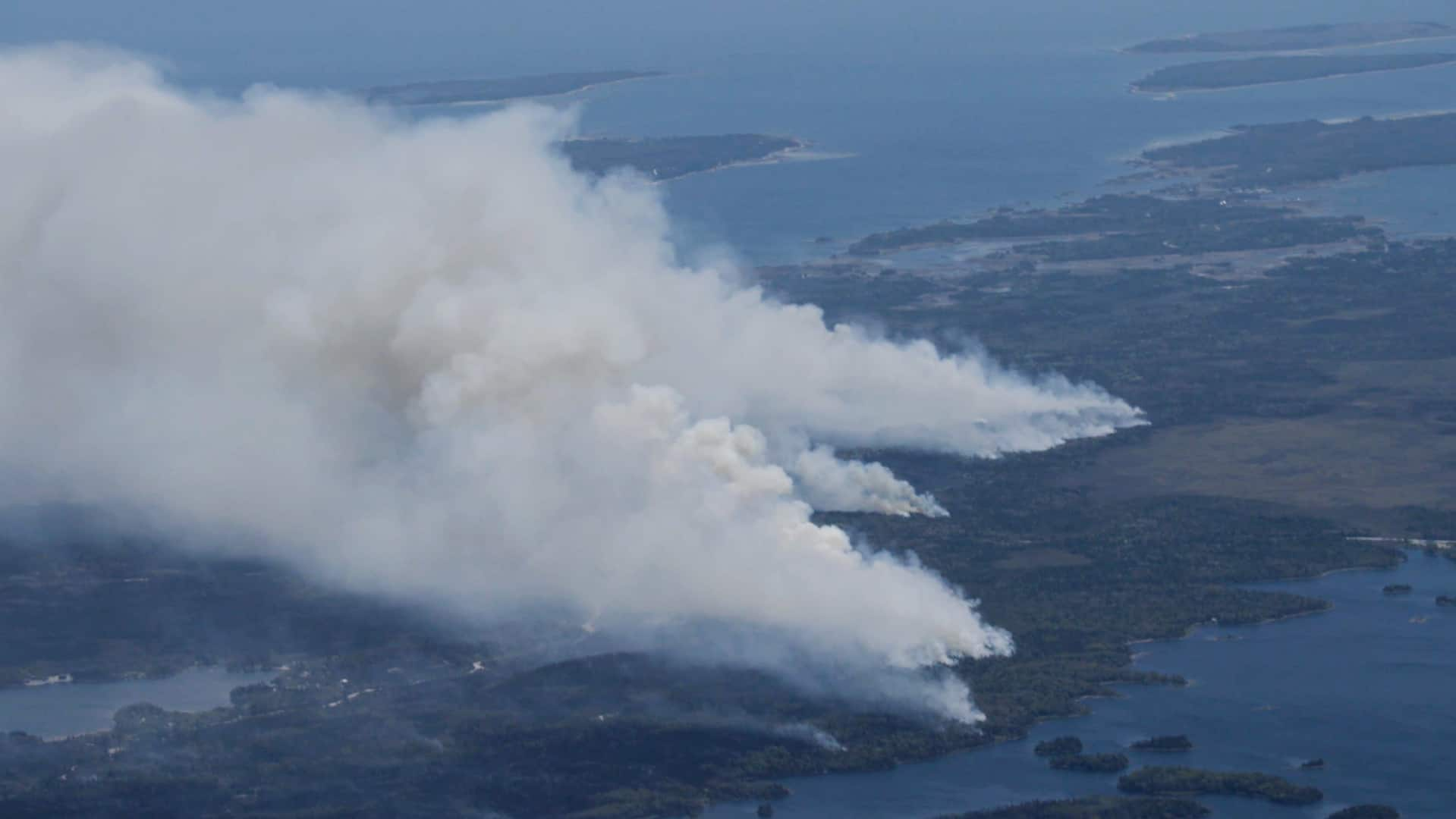In 2015, scientist Ellen Whitman set out on a visit to Wood Buffalo National Park, a vast wilderness spanning northeastern Alberta and the Northwest Territories.
At that time, the land had been subject to two major wildfires a decade apart — the most recent in 2014.
“The first fire burned a very large, mature pine stand and it was regrowing back as pine with a little bit of aspen mixed in,” recalled Whitman, a forest fire research specialist at Natural Resources Canada.
“Then that second fire killed all those seedlings and suddenly it’s basically a grassland with a few scattered aspen trees.”
Her team’s findings, laid out in a recently published paper, are part of a growing body of evidence showing how the changing climate and increased severity of wildfires are altering the makeup of North American forests.

Her research compared forest areas that had similar climate and soil conditions, but half had been subjected to fire twice in a short time span, while the other half had a longer period of regrowth.
In the areas where fire had recurred more quickly, aspens dominated in the place of conifers, and growth beneath the trees was far less established. Areas of exposed mineral soil, where all organic material had been burned off, were also more common.
“When you’ve had a severe disturbance or a repeated burning on top of burning or a really severe drought in the year after a fire, we might kind of start to see these patches changing to be more southern-like in their ecosystem structure,” Whitman said.
“Almost more like a savannah in some cases.”
Scientists say such a transformation is likely to be seen elsewhere in Canada’s boreal forest in the years to come.
Good fires and bad fires
Experts are quick to point out that fires are a crucial and natural aspect of a forest’s life cycle; they have allowed Canada’s boreal forest to flourish over millennia.
But there is also evidence that fires are becoming larger and more intense, changing what grows back after the flames go out.
“People talk about good fire and bad fire. The good fire is the fire that we’ve had historically that has helped to renew this landscape,” said Jennifer Baltzer, an associate professor in the department of biology at Wilfrid Laurier University in Ontario.
“The bad fires [are] what we’re seeing in the face of a combination of climate warming and really effective fire suppression in the past.”

Baltzer has also studied how boreal forests are changing across North America. Black spruce dominated most sites before a fire, but tended to lose dominance in its aftermath, according to data collected for a 2021 research paper.
In more extreme cases, areas filled with black spruce failed to regenerate at all. The findings also have troubling implications for the carbon stored beneath the forest floor, she said, potentially increasing the amount released into the atmosphere.
More than 5.1 million hectares have burned so far this year across Canada, according to federal data.
The worst fire season ever documented was in 1995, when 7.1 million hectares burned, government data showed. The country is on pace to surpass that by the end of June.
“I would anticipate that what we’re seeing now is going to play out as really severe burning fires,” said Merritt Turetsky, director of the Institute of Arctic and Alpine Research at the University of Colorado Boulder.
“We know that when a lot of organic matter — in the trees, but also on the ground in moss and peat layers — when a large amount of that is consumed during a fire, sites don’t regenerate back to what they were prior.”
In this changing landscape, there will be “winners and losers” among not only trees, but also the birds and mammals that thrive in a new environment, Whitman said.
Bison, for instance, tend to favour the long grasses and open spaces now found at the site of the recurring fires. On the other hand, there’s evidence woodland caribou depend on conifer peatlands as a maternal habitat, she said.
“If we start losing those, that doesn’t necessarily bode well for those species since the reproductive timing is super important for them to have a habitat where they’re less likely to encounter predators.”
So much hard work goes into getting wildfires under control — here’s what that work entails.
Change in expectations
Researchers say there are ways to slow these changes, starting with reducing greenhouse gas emissions.
In addition, Baltzer said improved fire management, by allowing some fires to burn in some cases, and increasing the number of prescribed burns in others, would help scale back the number of out-of-control, large-scale fires.
“In many parts of Canada, we have a build up of fuels in the landscape because of effective suppression,” she said.
“If you’re able to reduce some of the fuel that’s on the landscape, there’s the potential to help to facilitate fires that are not so damaging.”

Going forward, Whitman suggested different approaches will be needed depending on the circumstances — and the expectations. Increased tree planting in burned out areas could help, but only to a point, she said.
“Certainly we can replant after fires, but as people have really seen this year, it covers a vast area of the landscape,” she said, explaining that in some cases, planting trees may not be realistic.
She stressed that, in many cases, trees have still demonstrated the ability to reseed and regenerate.
“It’s really more a question of is it necessary for it to become a forest that’s as dense or of the exact same composition that you expected before, or do we need to say …. maybe it’s a little bit of an altered ecosystem.”



